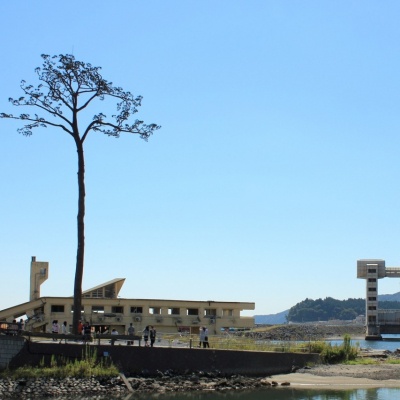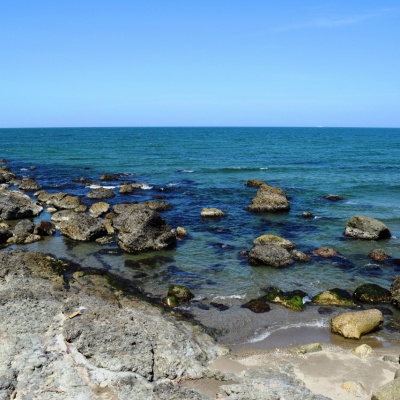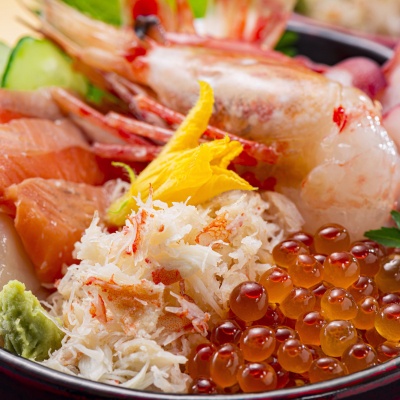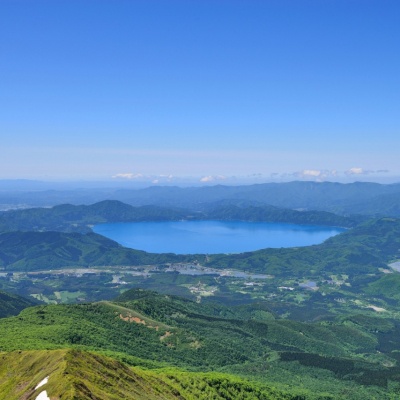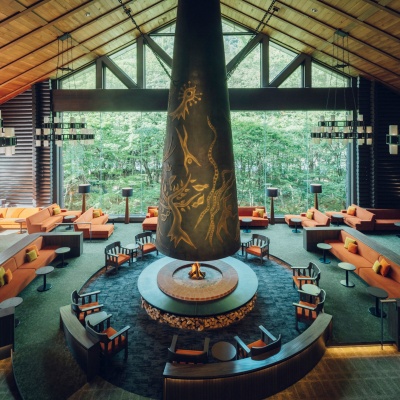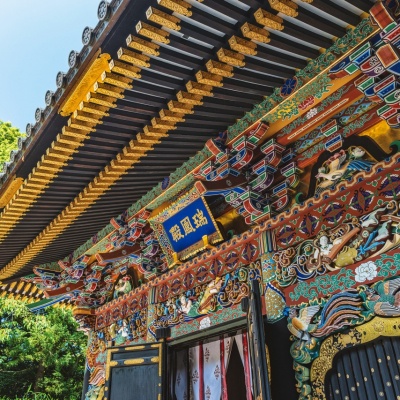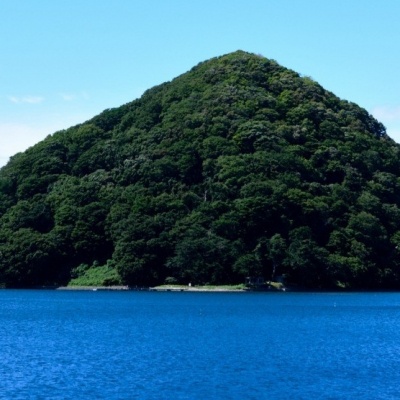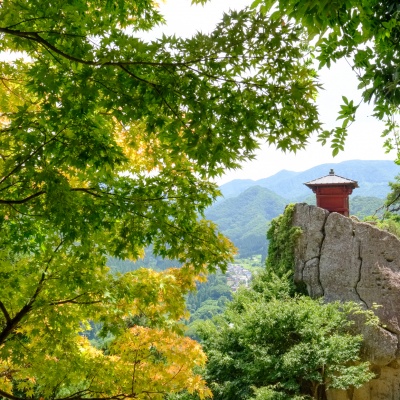Tour of Tohoku Towns and Relaxing Time with Akita Inu
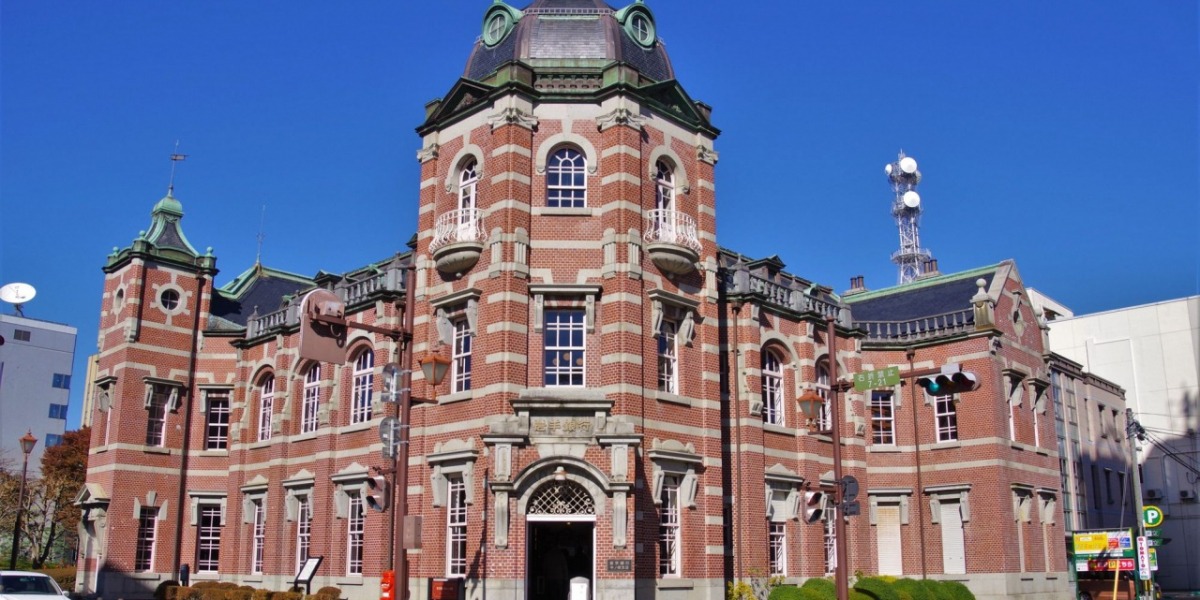
- Suggested Time : 3 days / 2 nights
- Transport Options : Drive
This route will take you on a tour of Tohoku cities that preserve historic buildings and samurai residences from times past. Each city evokes a different atmosphere, and exploring the streets on foot adds to the fun. You can also interact with cute Akita Inu dogs.
(Morioka - Tazawako - Kakunodate - Akita - Oga - Daikan - Hirosaki - Aomori)
START
Day1
Sendai-Hanamaki Airport, Ichinoseki Station
Chuson-ji Temple
A World Heritage temple complex featuring a dazzling golden hall
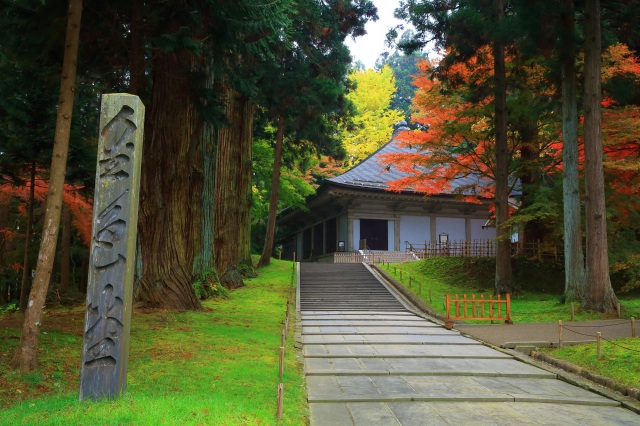
The "Cultural Heritage of Hiraizumi" was registered as a World Heritage Site in 2011. Chuson-ji Temple is famous for its gorgeous golden Konjikido (Konjikido), but there is much more to see, including Benkei-do, Yakushido, and the main hall!
Chuson-ji was founded in 850 by the great priest Jikaku Daishi Ennin, and in the early 12th century, Kiyohira, the first generation of the Oshu Fujiwara clan, began the construction of a large hall and pagoda. Kiyohira, who had lost his family in the war, is said to have expressed his wish for a peaceful ideal society based on the teachings of Buddha. Hiraizumi prospered as a gold-producing area, and Motohira the second, followed by Hidehira the third, flourished for nearly 100 years until Yasuhira the fourth was destroyed by the Minamoto clan. Konjikido, National Treasure No. 1, is the culmination of the craftsmanship of the time, including mother-of-pearl inlay, openwork carving, and lacquer maki-e. The "Sankozo" houses Buddhist statues and other valuable cultural assets. As a treasure house of Buddhist art representative of eastern Japan, the museum preserves the history and prosperity of the Oshu Fujiwara clan.
The temple is also attractive for its seasonal changes in appearance: cherry blossoms in spring, fresh greenery in summer, autumn leaves in fall, snow in winter, and the building and its natural surroundings.
Chuson-ji was founded in 850 by the great priest Jikaku Daishi Ennin, and in the early 12th century, Kiyohira, the first generation of the Oshu Fujiwara clan, began the construction of a large hall and pagoda. Kiyohira, who had lost his family in the war, is said to have expressed his wish for a peaceful ideal society based on the teachings of Buddha. Hiraizumi prospered as a gold-producing area, and Motohira the second, followed by Hidehira the third, flourished for nearly 100 years until Yasuhira the fourth was destroyed by the Minamoto clan. Konjikido, National Treasure No. 1, is the culmination of the craftsmanship of the time, including mother-of-pearl inlay, openwork carving, and lacquer maki-e. The "Sankozo" houses Buddhist statues and other valuable cultural assets. As a treasure house of Buddhist art representative of eastern Japan, the museum preserves the history and prosperity of the Oshu Fujiwara clan.
The temple is also attractive for its seasonal changes in appearance: cherry blossoms in spring, fresh greenery in summer, autumn leaves in fall, snow in winter, and the building and its natural surroundings.
Morioka Castle Ruins Park (Iwate Park)
The well-preserved stone walls are a must see. Enjoy year-round seasonal beauty in this castle ruins park!
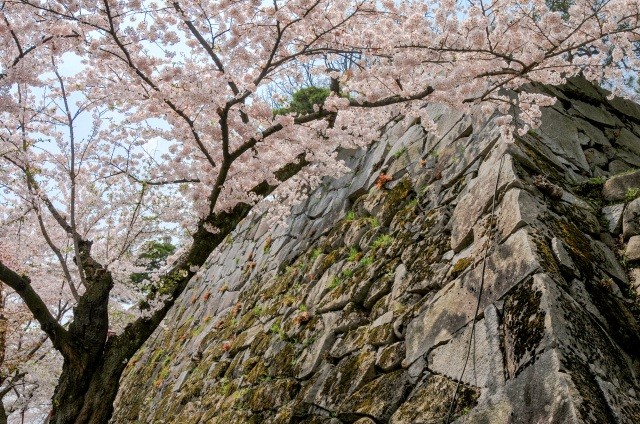
A 15-minute walk from Morioka station takes you to Morioka Castle, officially recognised as a national historic site and one of Japan’s top 100 castles.
When constructed in 1597 the castle was originally known as Kozukata Castle. It was the residence of the local feudal lords until 1874 when most of the buildings were demolished. Fortunately the stone walls remain in their original form and the castle grounds were preserved as a park in 1906.
Today the park is known as Morioka Castle Ruins Park and is a popular place for relaxation and recreation for locals. It is also recognised as one of Japan’s 100 best historical parks.
Many people come to the park during the springtime Sakura Festival. The view of cherry blossoms is enchanting when illuminated by paper lanterns at night. The park attracts visitors throughout the year with its seasonal beauty. Tsurugaike Pond is gracefully decorated with blooming wisteria trellises in May and hydrangeas in July. Scarlet maple leaves and vivid yellow gingko leaves are gorgeous in contrast with the castle’s stone walls in autumn. A large number of miniature snow huts create fascinating scenes when candlelit during Morioka Yukiakari Festival in winter.
The park is also home to monuments of some of the great names in literature including Takuboku Ishikawa, Kenji Miyazawa and Inazo Nitobe. Some of the works of each are inscribed on the monuments.
A thematic journey in the Tohoku region:Castles・SamuraiA thematic journey in the Tohoku region:Flowers
When constructed in 1597 the castle was originally known as Kozukata Castle. It was the residence of the local feudal lords until 1874 when most of the buildings were demolished. Fortunately the stone walls remain in their original form and the castle grounds were preserved as a park in 1906.
Today the park is known as Morioka Castle Ruins Park and is a popular place for relaxation and recreation for locals. It is also recognised as one of Japan’s 100 best historical parks.
Many people come to the park during the springtime Sakura Festival. The view of cherry blossoms is enchanting when illuminated by paper lanterns at night. The park attracts visitors throughout the year with its seasonal beauty. Tsurugaike Pond is gracefully decorated with blooming wisteria trellises in May and hydrangeas in July. Scarlet maple leaves and vivid yellow gingko leaves are gorgeous in contrast with the castle’s stone walls in autumn. A large number of miniature snow huts create fascinating scenes when candlelit during Morioka Yukiakari Festival in winter.
The park is also home to monuments of some of the great names in literature including Takuboku Ishikawa, Kenji Miyazawa and Inazo Nitobe. Some of the works of each are inscribed on the monuments.
A thematic journey in the Tohoku region:Castles・SamuraiA thematic journey in the Tohoku region:Flowers
Bank of Iwate Red Brick Building
Elegant red brick architecture that is a Morioka landmark
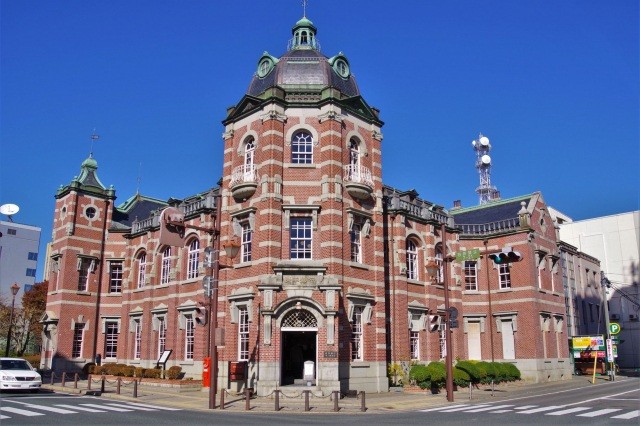
The Bank of Iwate Red Brick Building was built in 1911 as the head office for Morioka Bank. Designed by the Tatsuno-Kasai Architectural Design Office that designed Tokyo Station, this is the only architectural design by Kingo Tatsuno remaining in the Tohoku region. The building is designated as an Important Cultural Property. It is a dignified building with an elegant red brick face and a high ceiling that makes the inside feel open. It shows off the characteristic Western-style architecture of the time.
There are two zones in the building, the free Bank of Iwate zone and the paid admission Morioka Bank zone. The free zone features a multipurpose hall and a library lounge that introduces the history of Morioka's industry and commerce. The paid admission zone has a reception room and the vault used since the bank opened for business. There is also a corner that introduces the financial history of Iwate Prefecture and a theatre that shows the history and structure of the building in video.
There are two zones in the building, the free Bank of Iwate zone and the paid admission Morioka Bank zone. The free zone features a multipurpose hall and a library lounge that introduces the history of Morioka's industry and commerce. The paid admission zone has a reception room and the vault used since the bank opened for business. There is also a corner that introduces the financial history of Iwate Prefecture and a theatre that shows the history and structure of the building in video.
Morioka cold noodles (Korean style)
The noodles have an addictive firmness.
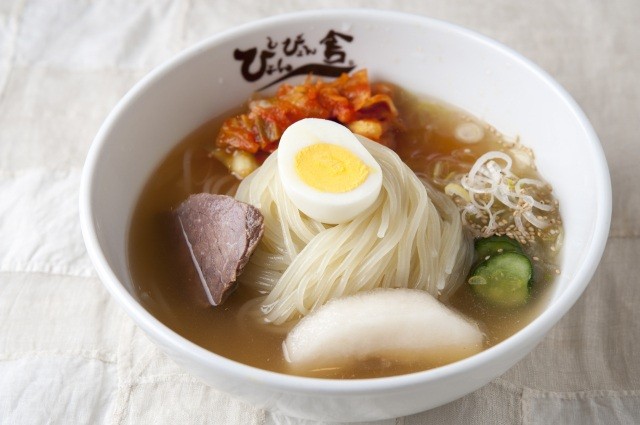
Morioka cold noodles were first made by a native of Pyongyang on the Korean Peninsula, who improved on the authentic taste. Morioka cold noodle is characterized by its firm translucent noodles made of wheat flour and potato starch, and many people are attracted by the unique flavor of the noodles with a firm texture, the rich soup made from beef bones, and the spiciness and sourness of kimchi. Those who do not like spicy food can adjust the spiciness by the amount of kimchi. At the "Pyonpyonsha Cold Noodle Factory" in Morioka Handmade Village, visitors can experience making cold noodles by hand.
Cold noodles are one of the three most popular noodles in Morioka (wankosoba, cold noodles, and jaja-men).
Cold noodles are one of the three most popular noodles in Morioka (wankosoba, cold noodles, and jaja-men).
Morioka History and Culture Museum
Get to know all about Morioka in just 1 hour! Combine a visit to the museum to the ruins of Morioka Castle
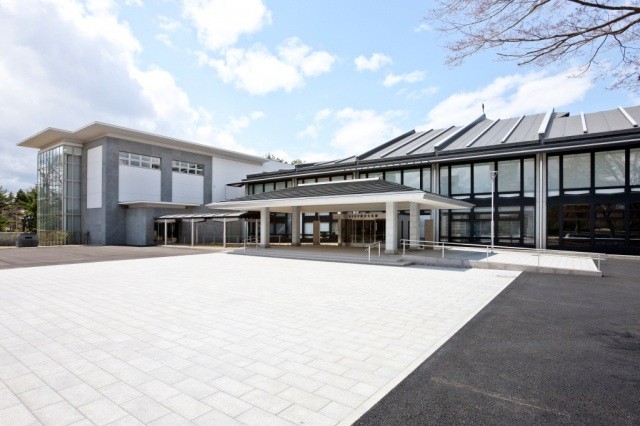
The distinctively designed building on the corner of Morioka Castle Ruins Park (Iwate Park) is the Morioka History and Culture Museum. The museum is an extension to the former Iwate Prefectural Library, designed by globally renowned architect Kiyonori Kikutake. This historic building is home to a wealth of information about Morioka’s culture. It’s a perfect spot to start if you’re a beginner when it comes to tourism in Morioka.
On the first floor you will find introductions to and sales of special Morioka products, and also lots of seasonal tourist information. There are models depicting the two major events of Iwate Prefecture, the Chagu Chagu Umakko Festival and Morioka Sansa Odori Festival, and the highlight is a 9m tall Dashi (festival float)! Why not take a photo or selfie with these impressive exhibits? On the second floor you will find exhibits relating to the history of the Morioka feudal domain and treasures of the Nanbu Clan.
There are also events and workshops that you can join on the day of your visit without a reservation, guaranteeing an interesting and interactive experience.
At the end of your visit try a cup of matcha green tea at Café Kozukata. The views over the castle ruins only enhance the delicious flavour of the matcha, making it a unique experience.
A thematic journey in the Tohoku region:Castles・Samurai
On the first floor you will find introductions to and sales of special Morioka products, and also lots of seasonal tourist information. There are models depicting the two major events of Iwate Prefecture, the Chagu Chagu Umakko Festival and Morioka Sansa Odori Festival, and the highlight is a 9m tall Dashi (festival float)! Why not take a photo or selfie with these impressive exhibits? On the second floor you will find exhibits relating to the history of the Morioka feudal domain and treasures of the Nanbu Clan.
There are also events and workshops that you can join on the day of your visit without a reservation, guaranteeing an interesting and interactive experience.
At the end of your visit try a cup of matcha green tea at Café Kozukata. The views over the castle ruins only enhance the delicious flavour of the matcha, making it a unique experience.
A thematic journey in the Tohoku region:Castles・Samurai
Iwa cast iron equipment
Visitors can observe the manufacturing process of Nambu tetsubin, a traditional handicraft. Enjoy shopping at our well-stocked store.
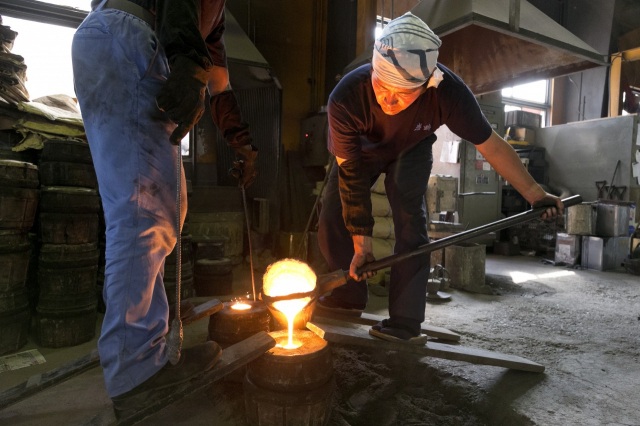
A theme park-type factory where visitors can see the craftsmanship of potters up close.Don't miss the ironware gallery, which boasts the largest selection of ironware in the prefecture.Nambu ironware is produced through many processes and human hands.The Nambu Tekki Gallery is a facility where visitors can see the manufacturing process of ironware up close.After admiring the dynamic and delicate world of manufacturing, such as casting and lacquer coloringAfter admiring the dynamic and delicate world of manufacturing, such as casting and lacquer coloring, visitors can visit the exhibition gallery, which boasts the largest selection of ironware in the prefecture.The staff, who are well versed in the manufacturing process and usage of ironware, will be happy to assist you with any questions you may have about ironware.Based on a tradition of over 400 years, new forms are being created every day.Come and experience the past, present, and future of Nambu ironware.
Tsunagi Onsen
A popular hot spring on the outskirts of Morioka, discovered by the famous warrior Minamoto no Yoshiie
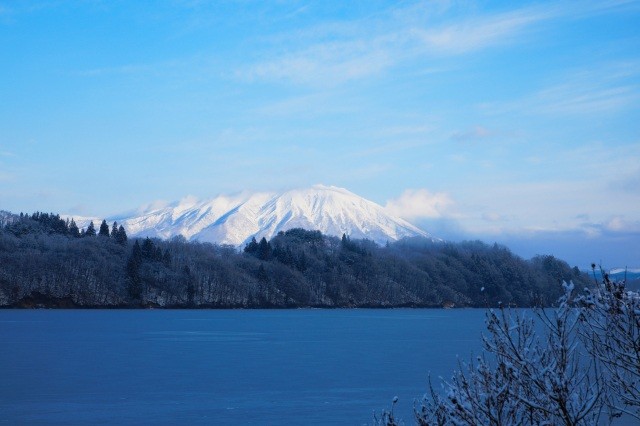
Tsunagi Onsen is located near Lake Gosho, a popular scenic location with views of Mount Iwaki and the impressive Tsunagi Bridge spanning the breadth of the lake.
With a history stretching back 900 years, Tsunagi Onsen is a popular hot spring on the outskirts of Morioka. The Onsen was named “Tsunagi” (tether) from when the famous samurai warrior Minamoto no Yoshiie took a bath while his horse was tied to a stone. The stone came to be known as Tsunagi Stone and can now be seen at the Tsunagi Onsen Shrine. The alkaline hot spring water is rich in metasilicic acid, a natural moisturiser, and is known to promote beautiful skin by removing waste products from the body and making the skin smooth.
Tsunagi Onsen is a 30-minute drive from Morioka station. Along with the nearby Koiwai Farm and Morioka Tezukuri Mura arts and crafts centre, the Onsen offers easy access to local attractions including Lake Towada, Mount Hachimantai, Kakunodate, Jodogahama Beach and Hiraizumi. The Onsen offers a wide range of hot spring inns suitable for all visitors and is the perfect location to stay while travelling around Northern Tohoku.
Visitors can enjoy the seasonal scenery of Lake Gosho with springtime cherry blossoms, verdant summer greens, vibrant autumn leaves and snowy winter scenes. The fireworks display over the lake during the summer festival is particularly spectacular.
With a history stretching back 900 years, Tsunagi Onsen is a popular hot spring on the outskirts of Morioka. The Onsen was named “Tsunagi” (tether) from when the famous samurai warrior Minamoto no Yoshiie took a bath while his horse was tied to a stone. The stone came to be known as Tsunagi Stone and can now be seen at the Tsunagi Onsen Shrine. The alkaline hot spring water is rich in metasilicic acid, a natural moisturiser, and is known to promote beautiful skin by removing waste products from the body and making the skin smooth.
Tsunagi Onsen is a 30-minute drive from Morioka station. Along with the nearby Koiwai Farm and Morioka Tezukuri Mura arts and crafts centre, the Onsen offers easy access to local attractions including Lake Towada, Mount Hachimantai, Kakunodate, Jodogahama Beach and Hiraizumi. The Onsen offers a wide range of hot spring inns suitable for all visitors and is the perfect location to stay while travelling around Northern Tohoku.
Visitors can enjoy the seasonal scenery of Lake Gosho with springtime cherry blossoms, verdant summer greens, vibrant autumn leaves and snowy winter scenes. The fireworks display over the lake during the summer festival is particularly spectacular.
Day2
Lake Tazawa / The Statue of Tatsuko
Get spiritual at Japan’s deepest lake with mysterious cobalt blue water!
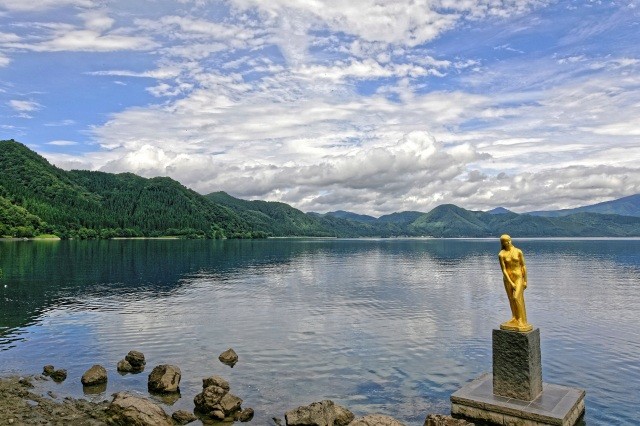
Lake Tazawa (Tazawako) is a stunning lake in Akita and has been selected as one of the 100 most scenic spots in Japan.
It is the deepest lake in Japan, with a depth of 423.4 meters. The surface of the lake changes from brilliant lapis lazuli to azure to indigo and is worth seeing. Take a cruise on a sightseeing boat, or take a paddle boat, canoe, kayak, SUP to enjoy the waters of the lake. It is also worth cycling, trekking, or driving along the lakeside to see the colors change across the lake. For those who want to stay longer, set up camp and see the changes with the time of day.
The Statue of Tatsuko is a golden female statue which stands against the backdrop of this magnificent lake. It is a famous spot by Lake Tazawa erected based on a legend that once upon a time, a girl named Tatsuko, who wished to keep her beauty forever, turned into a dragon and threw herself into Lake Tazawa. But there is more to this legend. In Hachirogata, or Hachiro Lagoon, there was a man named Hachiro Taro transformed into a dragon, and he fell in love with Tatsuko. As the two began to live together in Lake Tazawa, the lake became deeper and deeper without freezing in winter. In contrast, Hachiro Lagoon became shallower and shallower with each passing year when its master disappeared.
There are three statues associated with the Tatsuko Legend; the others being Tatsuko Kannon on the east shore of the lake and Tatsuko Hime (Princess Tatsuko) on the grounds of the Gozanoishi Shrine. Ukiki Shrine, located right next to the Statue of Tatsuko, is a power spot for marriage. Gozanoishi Shrine, which enshrines Tatsuko Hime no Kami as its main deity, is said to be bring beauty. The red torii gate is a popular photo spot.
It is the deepest lake in Japan, with a depth of 423.4 meters. The surface of the lake changes from brilliant lapis lazuli to azure to indigo and is worth seeing. Take a cruise on a sightseeing boat, or take a paddle boat, canoe, kayak, SUP to enjoy the waters of the lake. It is also worth cycling, trekking, or driving along the lakeside to see the colors change across the lake. For those who want to stay longer, set up camp and see the changes with the time of day.
The Statue of Tatsuko is a golden female statue which stands against the backdrop of this magnificent lake. It is a famous spot by Lake Tazawa erected based on a legend that once upon a time, a girl named Tatsuko, who wished to keep her beauty forever, turned into a dragon and threw herself into Lake Tazawa. But there is more to this legend. In Hachirogata, or Hachiro Lagoon, there was a man named Hachiro Taro transformed into a dragon, and he fell in love with Tatsuko. As the two began to live together in Lake Tazawa, the lake became deeper and deeper without freezing in winter. In contrast, Hachiro Lagoon became shallower and shallower with each passing year when its master disappeared.
There are three statues associated with the Tatsuko Legend; the others being Tatsuko Kannon on the east shore of the lake and Tatsuko Hime (Princess Tatsuko) on the grounds of the Gozanoishi Shrine. Ukiki Shrine, located right next to the Statue of Tatsuko, is a power spot for marriage. Gozanoishi Shrine, which enshrines Tatsuko Hime no Kami as its main deity, is said to be bring beauty. The red torii gate is a popular photo spot.
Kakunodate Bukeyashiki (Samurai Residences)
Travel back in time to the Edo period in the “Little Kyoto of Tohoku”!
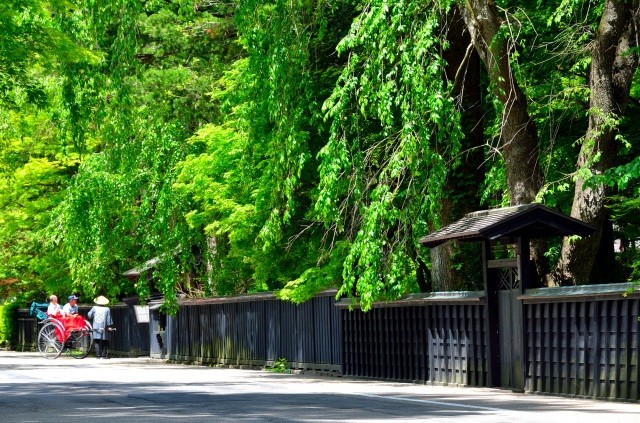
Kakunodate is a former castle town which flourished during the Edo period. Known as the “Little Kyoto of Tohoku”, the town is home to a district two-kilometres in radius consisting of samurai residences and traditional architecture popular with both domestic and international tourists. The samurai residences lining the town’s most famous street are nationally protected Traditional Buildings.
Though some of them are still functioning homes, the residences are open to the public so visitors can get a feel for the traditional samurai life. Tourists can travel back in time to the Edo period by strolling around the traditional streets in an antique Kimono from one of the rental stores in town! A rickshaw ride from the Kakunodate Denshokan Museum will enhance the experience.
The town is charming throughout the year with springtime cherry blossoms, verdant summer greens, colourful autumn leaves and snowy winter scenes. Springtime is particularly popular with people coming for cherry blossom viewing from late April to early May. The traditional district features a row of weeping cherry blossom trees whose pink flowers bloom in beautiful contrast with the black walls of samurai residences, 162 of the 400 weeping cherry trees are designated natural treasures.
The samurai district is a 15 to 20-minute walk from JR Kakunodate station. Be sure to pick up the handy map and brochures available at the tourist information centre, located in a building resembling a traditional storehouse in front of the station!
A thematic journey in the Tohoku region:Castles・SamuraiA thematic journey in the Tohoku region:Flowers
Though some of them are still functioning homes, the residences are open to the public so visitors can get a feel for the traditional samurai life. Tourists can travel back in time to the Edo period by strolling around the traditional streets in an antique Kimono from one of the rental stores in town! A rickshaw ride from the Kakunodate Denshokan Museum will enhance the experience.
The town is charming throughout the year with springtime cherry blossoms, verdant summer greens, colourful autumn leaves and snowy winter scenes. Springtime is particularly popular with people coming for cherry blossom viewing from late April to early May. The traditional district features a row of weeping cherry blossom trees whose pink flowers bloom in beautiful contrast with the black walls of samurai residences, 162 of the 400 weeping cherry trees are designated natural treasures.
The samurai district is a 15 to 20-minute walk from JR Kakunodate station. Be sure to pick up the handy map and brochures available at the tourist information centre, located in a building resembling a traditional storehouse in front of the station!
A thematic journey in the Tohoku region:Castles・SamuraiA thematic journey in the Tohoku region:Flowers
Akita City Folk Performing Arts Heritage Center (Neburi Nagashi Kan)
Experience a Kanto lantern the same size as the real thing!
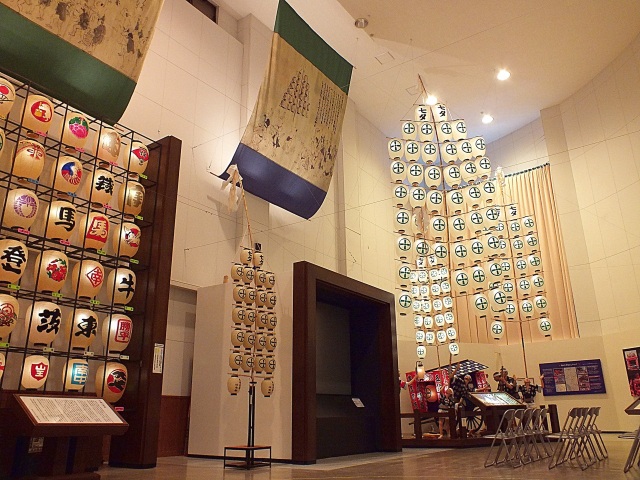
This facility introduces Akita City's traditional events and folk performing arts, such as Kanto and Akita Manzai, with materials and videos. The life-size Kanto lanterns lined up in the atrium exhibition hall are a spectacular sight.Visitors can actually hold the lanterns in their hands and experience the performance.
Namahage Museum
The collection of 150 hand-carved Namahage masks is a must see! Enjoy dressing up in a real Namahage costume!
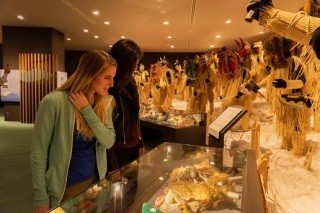
Namahage is a traditional folk event on the Oga Peninsula. Namahage wears an ogre mask and cries out, "Are there any crying children?" and is mistaken for a bad guy who makes children cry.In truth, however, he is a god who comes every New Year's Eve to warn people against laziness and to bring good health, good harvest in the fields, good harvest in the mountains, and good harvest in the sea.
The Namahage Museum introduces the history and culture of Namahage. The Namahage display corner features 150 diverse masks that were actually used in each village. In the Lore Hall, the movie "One Night of Namahage," which introduces the Namahage culture on New Year's Eve, is shown.
There is a corner where visitors can dress up in Namahage costumes and have their picture taken, and a souvenir corner where Namahage goods can be purchased. If you are lucky, you can watch a Namahage carver demonstrate hand-carving masks. (This event is held irregularly).
Next to the Namahage Museum is the Oga Mayama Folklore Museum, where Namahage demonstrations can be seen. Visit both and enjoy the Namahage, which has been registered as a UNESCO Intangible Cultural Heritage.
The Namahage Museum introduces the history and culture of Namahage. The Namahage display corner features 150 diverse masks that were actually used in each village. In the Lore Hall, the movie "One Night of Namahage," which introduces the Namahage culture on New Year's Eve, is shown.
There is a corner where visitors can dress up in Namahage costumes and have their picture taken, and a souvenir corner where Namahage goods can be purchased. If you are lucky, you can watch a Namahage carver demonstrate hand-carving masks. (This event is held irregularly).
Next to the Namahage Museum is the Oga Mayama Folklore Museum, where Namahage demonstrations can be seen. Visit both and enjoy the Namahage, which has been registered as a UNESCO Intangible Cultural Heritage.
Oga Onsen
A very popular attraction that is the pride of Akita, a unique and one-of-a-kind place that can only be found here!
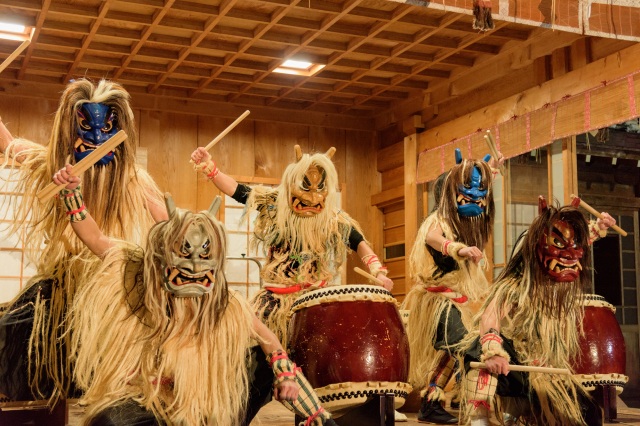
Oga Onsen, the home of the Namahage legend and effective hot spring water, contains salt similar to seawater, which is highly effective in moisturizing and beautifying the skin. As a culinary delight, you can also enjoy Oga's specialty, Ishiyaki cuisine. In addition, permanent performances of Namahage Taiko, a local performing art that combines Namahage and Japanese drums, are also held here.
Day3
Odate City Tourist Exchange Center Akita Dog Visitor Centre (Akita Inu no Sato) (Odate City, Akita Prefecture)
Akita Dog Visitor Centre (Akita Inu no Sato) has opened in front of Odate Station in Odate, the home of the Akita dog, Chuken Hachiko!
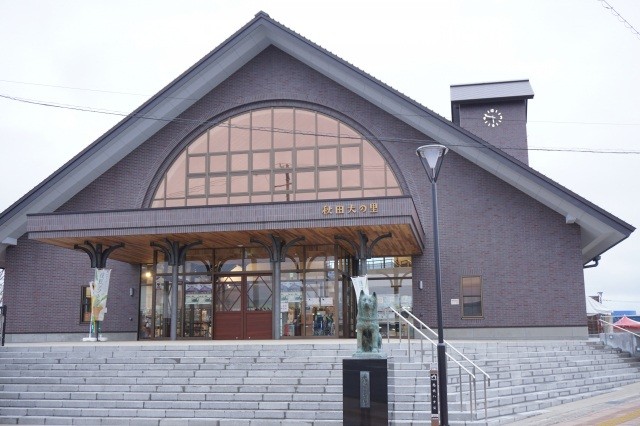
Odate City Tourist Exchange Center Akita Dog Visitor Centre (Akita Inu no Sato) where visitors can meet Akita dogs, opened in front of Odate Station in 2019. The exterior of the building is designed after Shibuya Station in the Taisho era (1912-1926), where Hachiko, the loyal dog born in Odate, waited for his owner.Inside the museum is an Akita Dog Exhibition Room where you can meet Akita dogs, an Akita Dog Museum where materials related to Akita dogs are displayed, and a Souvenir Corner.
Oyu Stone Circle Museum (Kazuno, Akita Prefecture)
Travel back in time to the Jomon Era! Akita Stone Circle
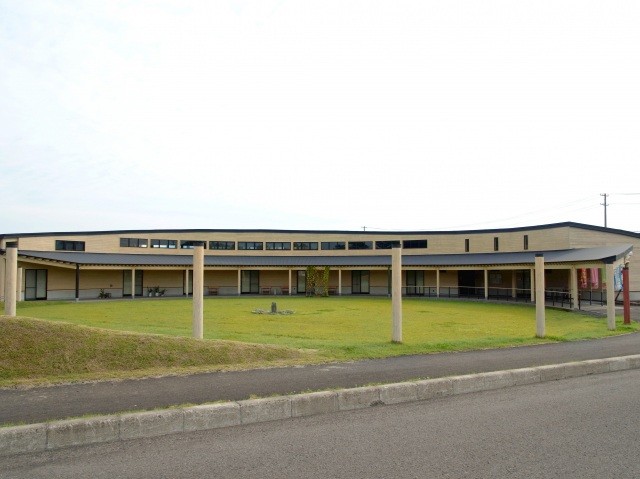
Visitors can learn about the Oyu Stone Circle through exhibits of earthenware excavated from the Oyu Stone Circle, a site dating back to the late Jomon Period (approximately 4,000 years ago). Visitors can also try their hand at making earthenware and pendants at the hands-on workshop.
Hirosaki Park (Hirosaki Castle Ruins)
Enjoy Hirosaki Castle and the beauty of the four seasons
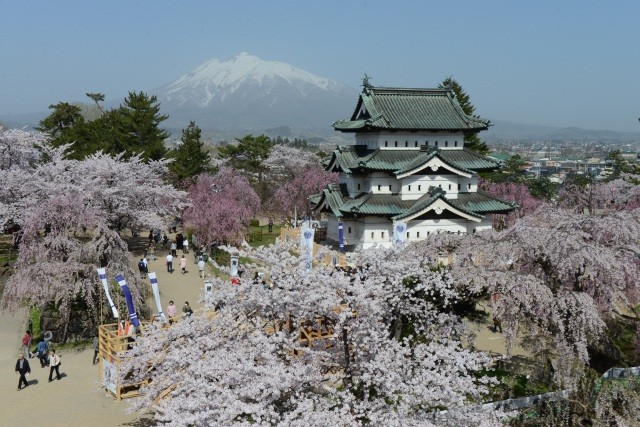
Hirosaki Castle was constructed back in 1611. The castle and the surrounding park opened as Hirosaki Park in May 1895 and has been enjoyed by many locals and visitors ever since.
The castle keep, five castle gates, and three corner turrets that have remained from the Edo period (1603-1867) are designated as National Important Cultural Properties.
Hirosaki Park is home to approximately 2,600 cherry trees of 52 varieties, making it one of the "Three Best Cherry Blossom Viewing Spots in Japan. There are many highlights, such as somei-yoshino, the oldest cherry tree in Hirosaki Park that is 140 years old, the illuminated yozakura (cherry blossoms at night), and "hanaikada," or flower rafts of cherry petals that cover the entire moat. The Hirosaki Cherry Blossom Festival, held every year from late April to early May, attracts many people from within and outside of the prefecture.
Currently, Hirosaki Castle's keep is being moved to the inner side of the castle's main citadel for repairs to the stonewalls, and for this limited time only, visitors can enjoy taking pictures of the keep and the cherry blossoms together with Mt. Iwaki.
In autumn, about 1,000 maple trees and 2,600 cherry trees turn brilliant colors, and chrysanthemum decorations and floral art adorn the site in the Hirosaki Castle Chrysanthemum and Autumn Leaves Festival. In winter, about 150 snow lanterns and snow statues handmade by citizens and about 300 miniature kamakura (Japanese igloos) lit with lights create a fantastic world in the Hirosaki Castle Snow Lantern Festival, offering beautiful seasonal scenes.
The castle keep, five castle gates, and three corner turrets that have remained from the Edo period (1603-1867) are designated as National Important Cultural Properties.
Hirosaki Park is home to approximately 2,600 cherry trees of 52 varieties, making it one of the "Three Best Cherry Blossom Viewing Spots in Japan. There are many highlights, such as somei-yoshino, the oldest cherry tree in Hirosaki Park that is 140 years old, the illuminated yozakura (cherry blossoms at night), and "hanaikada," or flower rafts of cherry petals that cover the entire moat. The Hirosaki Cherry Blossom Festival, held every year from late April to early May, attracts many people from within and outside of the prefecture.
Currently, Hirosaki Castle's keep is being moved to the inner side of the castle's main citadel for repairs to the stonewalls, and for this limited time only, visitors can enjoy taking pictures of the keep and the cherry blossoms together with Mt. Iwaki.
In autumn, about 1,000 maple trees and 2,600 cherry trees turn brilliant colors, and chrysanthemum decorations and floral art adorn the site in the Hirosaki Castle Chrysanthemum and Autumn Leaves Festival. In winter, about 150 snow lanterns and snow statues handmade by citizens and about 300 miniature kamakura (Japanese igloos) lit with lights create a fantastic world in the Hirosaki Castle Snow Lantern Festival, offering beautiful seasonal scenes.
Tsugaru-han Neputa Village
A facility where you can experience the charm of Tsugaru in its entirety.
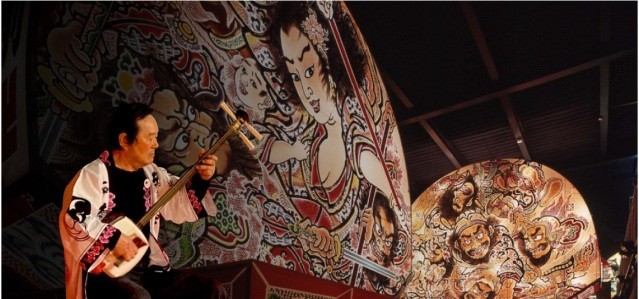
Visitors can experience the charms of Tsugaru in its entirety through exhibitions of Hirosaki Neputa, a corner for making goldfish Neputa, and live performances of Neputa music and Tsugaru Shamisen.There is also a corner where vegetables, apples, rice, and other produce are sold, as well as a corner where crafts are sold.
Fee-based tour area (30-45 minutes)Visitors can see a 10-meter-high large-scale neputa and a life-size neputa exhibit that allows them to see the framework of the inside of the neputa, experience a musical performance with flutes and drums, and watch crafts such as Tsugaru kites and Tsugaru lacquerware being made in a rice warehouse from the era of the feudal government, which is designated as a quaint building by Hirosaki City, and enjoy live performances of Tsugaru shamisen music every day.Visitors can also tour the Japanese garden "Yoki-en," designated as a national monument, and the teahouse "Yoki-an," a cultural asset of Hirosaki City. The garden is a unique Tsugaru-style garden in the Oishi Bugaku school, with a borrowed landscape of Mt.
Experience (see website for details)Visitors can try their hand at various crafts, including painting goldfish neputa, Tsugaru kite painting, apple clay bell painting, and Tsugaru pottery clay crafting.
Shopping (no admission fee required)In addition to antenna stores selling processed agricultural, forestry, and fishery products, souvenirs, and handicrafts from the prefecture, there are also direct sales stores of apples, vegetables, and other products sold by JA (Japan Agricultural Cooperatives), as well as stores selling hand-baked rice crackers.On Sunday mornings (6:30-7:30) from June to October every year, a morning market is held where vegetables and fruits from Aomori Prefecture are sold. (Please check the website for details.)
●Dining (no admission fee required)You can dine at "Tsugaru Umaiya", a "Tsugaru Culinary Heritage Store" that serves home-style dishes that have been passed down from generation to generation for the people living in Tsugaru. Groups of up to 200 people can be accommodated.
(Information as of September 30, 2023)
Fee-based tour area (30-45 minutes)Visitors can see a 10-meter-high large-scale neputa and a life-size neputa exhibit that allows them to see the framework of the inside of the neputa, experience a musical performance with flutes and drums, and watch crafts such as Tsugaru kites and Tsugaru lacquerware being made in a rice warehouse from the era of the feudal government, which is designated as a quaint building by Hirosaki City, and enjoy live performances of Tsugaru shamisen music every day.Visitors can also tour the Japanese garden "Yoki-en," designated as a national monument, and the teahouse "Yoki-an," a cultural asset of Hirosaki City. The garden is a unique Tsugaru-style garden in the Oishi Bugaku school, with a borrowed landscape of Mt.
Experience (see website for details)Visitors can try their hand at various crafts, including painting goldfish neputa, Tsugaru kite painting, apple clay bell painting, and Tsugaru pottery clay crafting.
Shopping (no admission fee required)In addition to antenna stores selling processed agricultural, forestry, and fishery products, souvenirs, and handicrafts from the prefecture, there are also direct sales stores of apples, vegetables, and other products sold by JA (Japan Agricultural Cooperatives), as well as stores selling hand-baked rice crackers.On Sunday mornings (6:30-7:30) from June to October every year, a morning market is held where vegetables and fruits from Aomori Prefecture are sold. (Please check the website for details.)
●Dining (no admission fee required)You can dine at "Tsugaru Umaiya", a "Tsugaru Culinary Heritage Store" that serves home-style dishes that have been passed down from generation to generation for the people living in Tsugaru. Groups of up to 200 people can be accommodated.
(Information as of September 30, 2023)
Nebuta House Wa Rasse
Nebuta Museum Wa Rasse
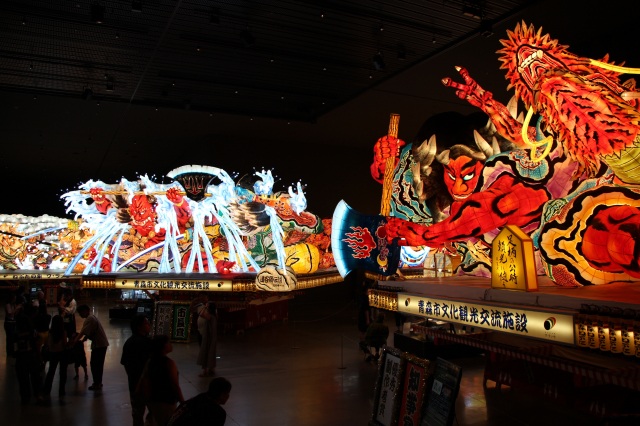
Four of the large Nebuta floats that have been used in the Nebuta Festival are on display. Aomori Nebuta Festival experience is available every day.
【Main Facilities】 Visitors can learn about the history of the Nebuta Festival and how it works. (1) Live Nebuta music performance and hands-on experience of the Nebuta Festival and its music 11:10, 13:10, 15:10, 17:10 (20 minutes each) (2) Nebuta Operation Showings: 9:30, 10:00, 10:30, 11:00, 11:30, 12:00, 12:30, 13:00, 13:30, 14:00, 14:30, 15:00, 15:30, 16:00, 16:30, 17:00, 17:30 (10 minutes each) (18:00 and 18:30 added from May to August) Hours of Operation Nebuta Museum May-August 9:00-19:00, September-April 9:00-18:00 (last admission 30 minutes before) Store May-August 9:00-19:30 September-April 9:00-18:30 Restaurant May-August Lunch time 11:00-15:00 (15:00-20:00) September-April 11:00-15:00 (15:00-19:00) *Reservations required for times in parentheses.
One hour free parking for Nebuta Museum Hall visitors Discounts for the disabled are available.
(Information as of September 25, 2024)
【Main Facilities】 Visitors can learn about the history of the Nebuta Festival and how it works. (1) Live Nebuta music performance and hands-on experience of the Nebuta Festival and its music 11:10, 13:10, 15:10, 17:10 (20 minutes each) (2) Nebuta Operation Showings: 9:30, 10:00, 10:30, 11:00, 11:30, 12:00, 12:30, 13:00, 13:30, 14:00, 14:30, 15:00, 15:30, 16:00, 16:30, 17:00, 17:30 (10 minutes each) (18:00 and 18:30 added from May to August) Hours of Operation Nebuta Museum May-August 9:00-19:00, September-April 9:00-18:00 (last admission 30 minutes before) Store May-August 9:00-19:30 September-April 9:00-18:30 Restaurant May-August Lunch time 11:00-15:00 (15:00-20:00) September-April 11:00-15:00 (15:00-19:00) *Reservations required for times in parentheses.
One hour free parking for Nebuta Museum Hall visitors Discounts for the disabled are available.
(Information as of September 25, 2024)
Special Historic Site Sannai-Maruyama Ruins
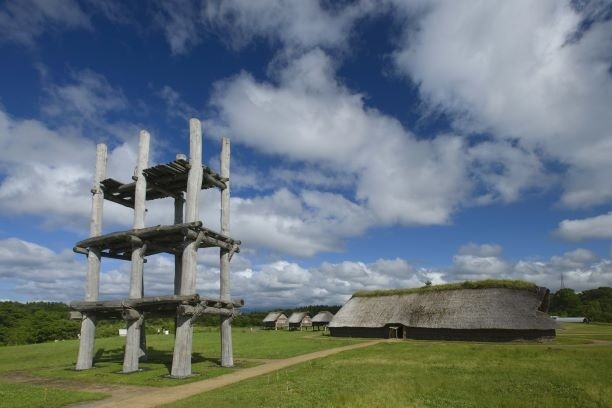
The Sannai-Maruyama Site is one of Japan's largest early to middle Jomon Period sites. The site was designated as a Special Historic Site by the national government in November 2000. In July 2021, the "Jomon Monuments of Hokkaido and the Northeast" including the Sannai-Maruyama Site were registered as a World Heritage Site.At the Jomon Jiyukan, excavated artifacts are displayed in the permanent exhibition room "SANMARU MUSEUM," a Jomon Theater shows films introducing the ruins, and a hands-on workshop allows visitors to experience making things (for details, see "Sannai-Maruyama Site Hands-on Workshop"). The Jomon Theater shows a video introducing the ruins.Volunteer guides are also available to show visitors around the ruins.
Aomori Museum of Art
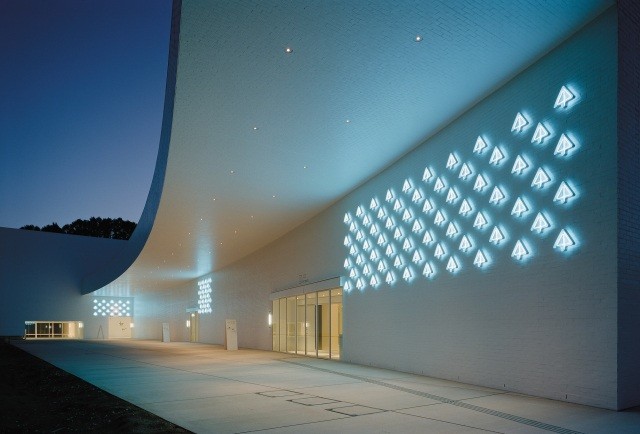
Inspired by the excavation site of the Sannai-Maruyama Ruins, the building was designed by the spirited architect Jun Aoki. Visitors can view works by artists associated with Aomori Prefecture, such as Chagall's 9m x 15m stage background painting for his large-scale ballet "Areco," as well as works by Yoshitomo Nara, Shiko Munakata, and Shuji Terayama.This is a space where visitors can experience Aomori's unique artistic creation scene.
Shin-Aomori Station, Aomori Airport
GOAL
